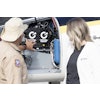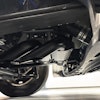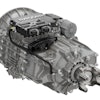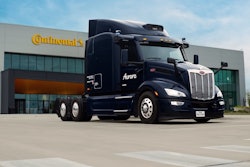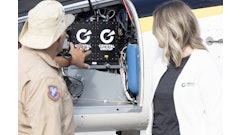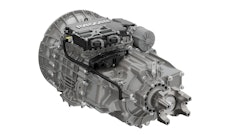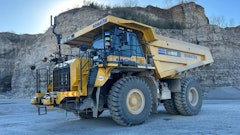
Whether it's antilock brakes, full stability, collision mitigation, or steering capabilities, today’s commercial vehicle driver assistance systems are engineered to help people behind the wheel do their job more safely and comfortably. And getting the most out of these driver-supporting technologies — as well as for optimal safety, performance and return on investment — relies on pairing them with the right brakes and friction.
ADAS Foundations
Let’s dig into this by beginning with a look at the origins and capabilities of some of today’s leading-edge advanced driver assistance system (ADAS), starting with antilock braking systems (ABS). ABS technology has been around for several decades now and improves vehicle stability and steerability by helping to prevent wheel lock during braking. It operates by using wheel speed sensors communicating with an electronic control unit (ECU), which may automatically reduce the brake pressure at a wheel that’s locking up, and control pressure independently at each wheel-end. ABS has been mandated on new tractors and trailers since the late 1990s and forms the base technology upon which full-stability systems are built.
Full stability, sometimes called electronic stability control (ESC), has been mandatory on new commercial vehicles in the U.S. since 2017. Full-stability technology adds more sensors to address a tractor’s roll and directional stability, as well as measuring driver intent and vehicle direction. This means ESC can recognize and potentially help drivers mitigate conditions that could lead to rollover and loss-of-control situations on dry, snowy, ice-covered and slippery surfaces. When necessary, full-stability systems may offer automatic brake interventions involving the steer, drive and trailer axles. ESC serves as the base for collision mitigation technologies and other higher-level ADAS capabilities.
Technology Can't Replace Drivers
Over the past decade, collision mitigation systems have incorporated forward-facing radar and cameras, and can provide everything from active cruise control with braking to speed limit sign recognition and overspeed alerts. Integrating steering sensors and torque overlay helps make additional enhancements possible, including lane keep assist and speed-dependent steering assist, which can help compensate for high winds and road crown to help reduce driver fatigue.
With all the advantages ADAS offers, it’s important to remember that safety technologies complement safe driving practices. ADAS effectiveness in helping enhance roadway safety is clear, but it’s crucial to remember that no commercial vehicle safety technology replaces a skilled, alert driver exercising safe driving techniques and proactive, comprehensive driver training. Responsibility for the safe operation of the vehicle remains with the driver at all times.
A 2020 article by the Insurance Institute for Highway Safety (IIHS) concluded that, “Forward collision warning and autonomous emergency braking (AEB) reduced rear-end crashes — the specific type of collision they’re designed to prevent — by 44% and 41%, respectively.”
And since automatic brake applications play a key role in each of these technologies — ABS, full stability and collision mitigation — it follows that the actual stopping power at each wheel-end will directly affect their performance.
The Air Disc Brake Difference
ABS, full stability and collision mitigation systems are all fully compatible with drum brakes — but in order to maximize your investment, one consideration might be air disc brakes. Because they provide shorter stopping distances (Figure 1.), particularly after repeated stops, and their straighter, more stable stops (compared to drum brakes), air disc brakes help drivers remain in control — benefitting drivers during both normal and AEB brake activations.
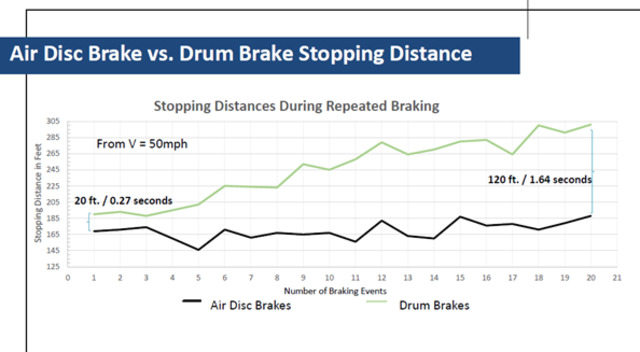 Figure 1.Bendix Commercial Vehicle Systems LLC
Figure 1.Bendix Commercial Vehicle Systems LLC
At a base level, side-by-side in a one-stop application, a tractor-trailer combination equipped with air disc brakes on all wheel-ends will stop 20 feet shorter than the same vehicle combo equipped with all drum brakes. At 50 mph, this is 0.27 seconds of extra time for an ADAS system to potentially react and/or for driver intervention to occur.
It doesn’t sound like a lot of time, but considering the average car length of 14.7 feet, this could be the difference between experiencing a collision and potentially mitigating or avoiding a collision altogether.
The advantages of air disc brakes become even more apparent over repeated braking since drum brakes experience fade as they heat up. As heat builds up during brake applications, thermal expansion occurs — the drum expands out away from the brake shoes, resulting in extended stopping distances. Over a series of 20 stops, the tractor/trailer fully equipped with ADB gains 1.64 seconds of reaction time compared to drum brakes, equating to a dramatic 120-foot difference in stopping distance.
Friction Still Matters
Whether you’re equipping discs or drums, selecting the right replacement components — friction in particular — is also key to optimizing the performance of an ADAS systems.
The aftermarket provides many friction options for both discs and drums. Not all of them, however, will meet stopping distance requirements in effect at the time of a vehicle’s manufacture, which could therefore impact a vehicle’s performance, including stopping distance and parking capability. Aftermarket parts that don’t come from the OEM may also lead to excessive rotor or pad wear, resulting in more frequent brake jobs, higher replacement part costs and more downtime.
When replacing a vehicle’s friction, it is recommended to use like-for-like components in order to maintain the OEM’s braking performance levels — helping keep roads safer, and protecting the investment in both drivers and technology.
It’s All Connected
Across the North American commercial vehicle landscape, ADAS features continue to evolve and expand, varying between manufacturers and models. Alert and intervention capabilities are becoming more active and effective in a wider range of situations — such as multilane automatic emergency braking (AEB), for instance, which can continually apply the brakes after an AEB event in which the driver steers into an adjacent lane where another forward vehicle threat is detected. Highway departure alert and braking can apply brakes if a system determines the vehicle has unintentionally left the roadway.
In any one of these situations — or countless others — one must ensure drivers are trained properly on system features and their limitations, and that the assistance technologies are supported by the most effective, reliable and well-maintained brakes. A lot goes into the investment of drivers, fleets and advanced safety technologies: Protecting them all helps contribute to safer highways for everyone.
Mark Holley is director of marketing and customer solutions, wheel-end, at Bendix Commercial Vehicle Systems LLC. Visit bendix.com.
